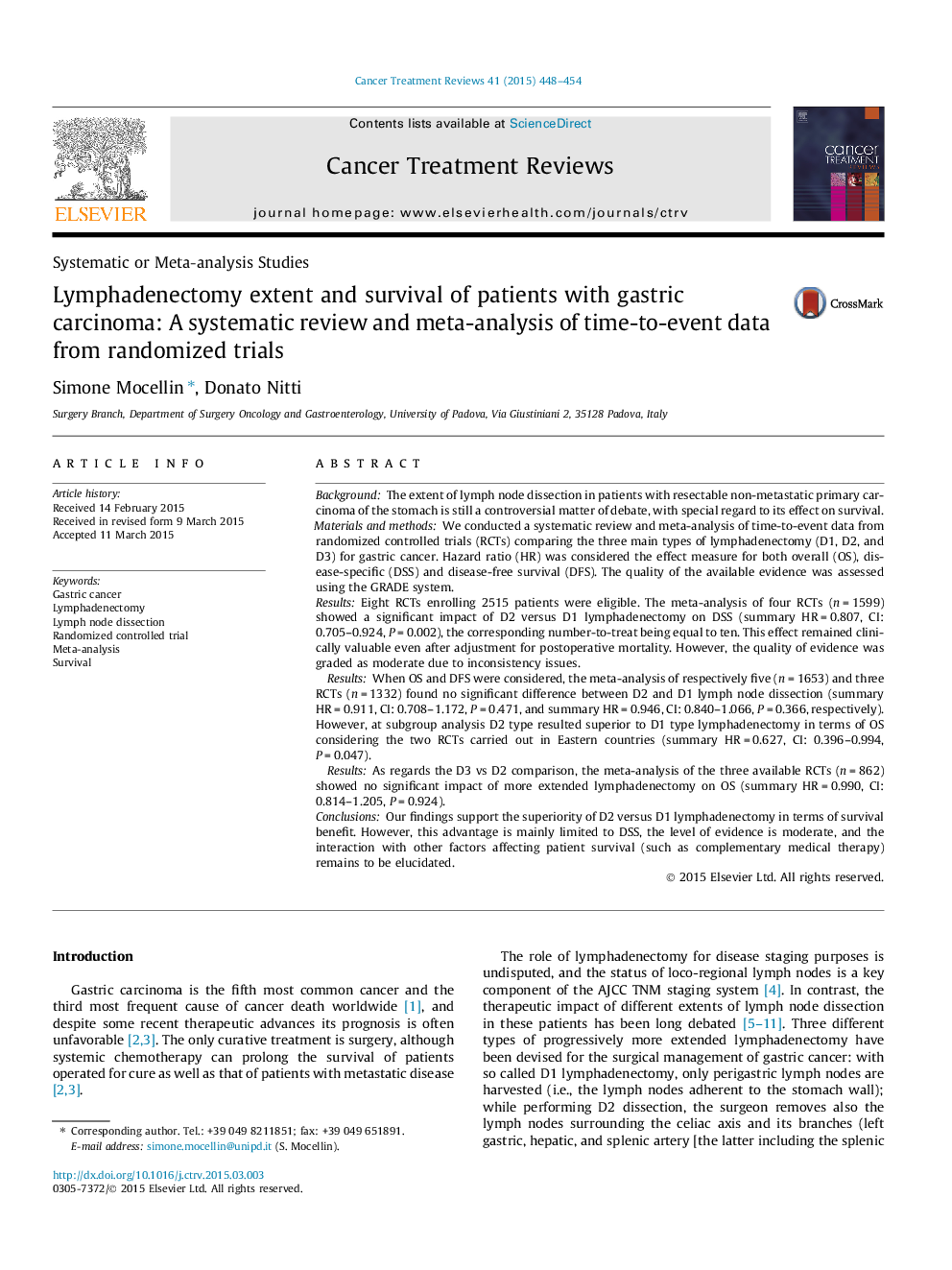| Article ID | Journal | Published Year | Pages | File Type |
|---|---|---|---|---|
| 3979846 | Cancer Treatment Reviews | 2015 | 7 Pages |
•The extent of lymph node dissection in patients with primary gastric carcinoma is still a controversial matter of debate.•The present meta-analysis is the first to comprehensively consider time-to-event data.•Our findings support for the first time the superiority of D2 versus D1 lymphadenectomy in terms of survival benefit.•A pancreas- and spleen-preserving D2 lymphadenectomy should be considered to reduce postoperative morbidity and mortality.
BackgroundThe extent of lymph node dissection in patients with resectable non-metastatic primary carcinoma of the stomach is still a controversial matter of debate, with special regard to its effect on survival.Materials and methodsWe conducted a systematic review and meta-analysis of time-to-event data from randomized controlled trials (RCTs) comparing the three main types of lymphadenectomy (D1, D2, and D3) for gastric cancer. Hazard ratio (HR) was considered the effect measure for both overall (OS), disease-specific (DSS) and disease-free survival (DFS). The quality of the available evidence was assessed using the GRADE system.ResultsEight RCTs enrolling 2515 patients were eligible. The meta-analysis of four RCTs (n = 1599) showed a significant impact of D2 versus D1 lymphadenectomy on DSS (summary HR = 0.807, CI: 0.705–0.924, P = 0.002), the corresponding number-to-treat being equal to ten. This effect remained clinically valuable even after adjustment for postoperative mortality. However, the quality of evidence was graded as moderate due to inconsistency issues.When OS and DFS were considered, the meta-analysis of respectively five (n = 1653) and three RCTs (n = 1332) found no significant difference between D2 and D1 lymph node dissection (summary HR = 0.911, CI: 0.708–1.172, P = 0.471, and summary HR = 0.946, CI: 0.840–1.066, P = 0.366, respectively). However, at subgroup analysis D2 type resulted superior to D1 type lymphadenectomy in terms of OS considering the two RCTs carried out in Eastern countries (summary HR = 0.627, CI: 0.396–0.994, P = 0.047).As regards the D3 vs D2 comparison, the meta-analysis of the three available RCTs (n = 862) showed no significant impact of more extended lymphadenectomy on OS (summary HR = 0.990, CI: 0.814–1.205, P = 0.924).ConclusionsOur findings support the superiority of D2 versus D1 lymphadenectomy in terms of survival benefit. However, this advantage is mainly limited to DSS, the level of evidence is moderate, and the interaction with other factors affecting patient survival (such as complementary medical therapy) remains to be elucidated.
